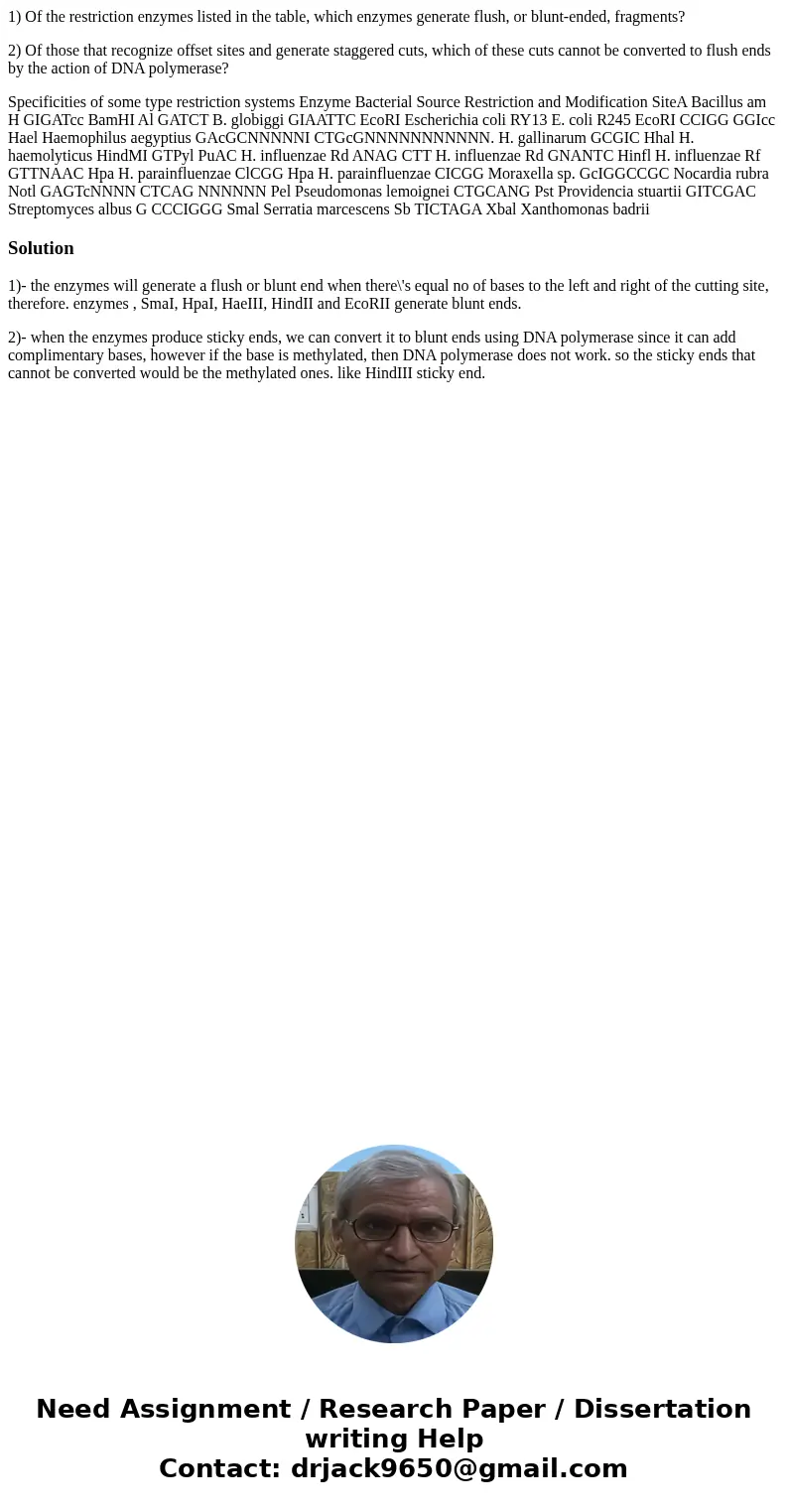1 Of the restriction enzymes listed in the table which enzym
1) Of the restriction enzymes listed in the table, which enzymes generate flush, or blunt-ended, fragments?
2) Of those that recognize offset sites and generate staggered cuts, which of these cuts cannot be converted to flush ends by the action of DNA polymerase?
Specificities of some type restriction systems Enzyme Bacterial Source Restriction and Modification SiteA Bacillus am H GIGATcc BamHI Al GATCT B. globiggi GIAATTC EcoRI Escherichia coli RY13 E. coli R245 EcoRI CCIGG GGIcc Hael Haemophilus aegyptius GAcGCNNNNNI CTGcGNNNNNNNNNNN. H. gallinarum GCGIC Hhal H. haemolyticus HindMI GTPyl PuAC H. influenzae Rd ANAG CTT H. influenzae Rd GNANTC Hinfl H. influenzae Rf GTTNAAC Hpa H. parainfluenzae ClCGG Hpa H. parainfluenzae CICGG Moraxella sp. GcIGGCCGC Nocardia rubra Notl GAGTcNNNN CTCAG NNNNNN Pel Pseudomonas lemoignei CTGCANG Pst Providencia stuartii GITCGAC Streptomyces albus G CCCIGGG Smal Serratia marcescens Sb TICTAGA Xbal Xanthomonas badriiSolution
1)- the enzymes will generate a flush or blunt end when there\'s equal no of bases to the left and right of the cutting site, therefore. enzymes , SmaI, HpaI, HaeIII, HindII and EcoRII generate blunt ends.
2)- when the enzymes produce sticky ends, we can convert it to blunt ends using DNA polymerase since it can add complimentary bases, however if the base is methylated, then DNA polymerase does not work. so the sticky ends that cannot be converted would be the methylated ones. like HindIII sticky end.

 Homework Sourse
Homework Sourse